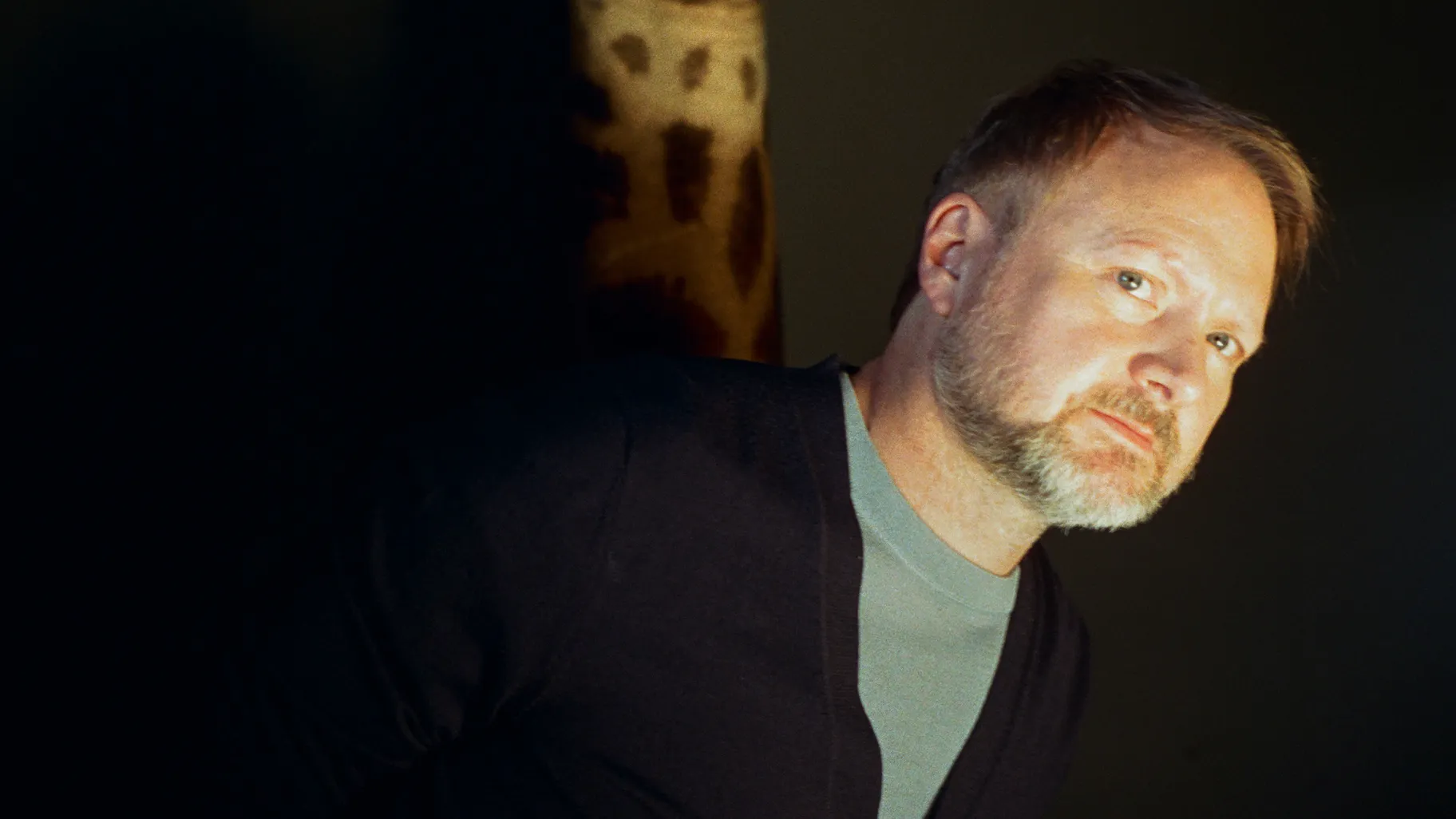Copyright newyorker

The book was not only a dynamite mystery; it also represented a kind of magic trick. Although it was published at the end of Christie’s life, she wrote the manuscript in the middle of her career, in the nineteen-forties. Then, in a twist worthy of Poirot, she sealed it away in a bank vault for thirty years, insuring that it was kept secret. As her popularity waned, she suddenly produced—voilà!—a book written at the height of her powers. The novel was, Johnson said, “very mysterious and awesome, and very, very weird.” Soon, he was bingeing Christie novels two or three at a time. He once walked into a fire hydrant while reading one. In Los Angeles, earlier this year, Johnson’s normally mild countenance grew animated as he recounted the plot of “Curtain.” “Do you want it spoiled?” he asked. “Do you really?” We were sitting in the sunlit offices of his production company, T-Street, surrounded by shelves filled with trinkets: a hollow Bible concealing a cigar, an engraved knife. On the wall was a print by the eighteenth-century artist Matthias Buchinger, who was born without hands or legs, from the collection of the late magician Ricky Jay. Johnson, who is short, with a salt-and-pepper beard, has a nerdy, understated demeanor. He was dressed casually, in the type of short-sleeved button-down you might wear to a family barbecue. He believes that people-pleasing leads well into directing. If you didn’t know better, you might mistake him for a particularly nice I.T. guy. In 2019, Johnson tried his own hand at a murder mystery with the film “Knives Out.” Close-quartered and stylish, the movie begins at a Gothic New England mansion where the wealthy patriarch Harlan Thrombey has been found with his throat slit. Harlan has an avaricious family, each member of which has something to gain from his death. Like Christie’s novels, the film is a study of its time. The Thrombeys argue bitterly about politics, money, and immigration. (“Alt-right troll,” Harlan’s granddaughter says to her cousin. “Liberal snowflake,” he responds.) Like Christie, Johnson gave his mystery a detective with a high regard for his own intellect: the Southern gentleman Benoit Blanc, played by Daniel Craig. The film was a surprise hit with critics and audiences. The Guardian called it “deliciously entertaining.” At fifty-one, Johnson is a Hollywood rarity: a writer-director with a singular vision, able to turn his oddball, idiosyncratic stories—written by hand, in moleskin notebooks—into blockbuster hits. He flits among genres, creating intricate, puzzle-like plots that reward multiple viewings. The success of “Knives Out” cemented Johnson’s status as an Agatha Christie for the Netflix age. Natasha Lyonne, who stars in his mystery TV series, “Poker Face,” told me, “His plots are all right there in his mind’s eye.” In the writers’ room, he will quietly flesh out inventive killings while others are discussing home renovations, then reveal them with a flourish. Craig said, of Johnson, “He’s always playing 4-D chess.” This fall, Johnson will release the third Benoit Blanc mystery, “Wake Up Dead Man.” Unlike the second, “Glass Onion,” which veered into slapstick, “Wake Up Dead Man” shares the cloistered tone of the first “Knives Out.” The story takes place at a parish in upstate New York, where the charismatic Monsignor Jefferson Wicks (Josh Brolin) exerts a magnetic pull over his flock. The parishioners, played by Glenn Close, Andrew Scott, and Kerry Washington, among others, are a paranoid bunch. They resent the intrusion of Father Jud (Josh O’Connor), an idealistic young priest sent to assist Wicks. When Wicks is murdered, Jud looks likely to take the fall. Enter Blanc. At the T-Street offices, Johnson sat in an armchair near his longtime producer Ram Bergman. They had recently finished the film’s final cut and were anxiously awaiting its première. Nearby was a faithful scale model of the Titanic, constructed out of nine thousand Lego pieces, which Johnson had built to keep his hands busy during a film edit. Both men turned to regard a giant pinboard outlining the film’s plot. It was covered in Post-its and string, like the work of a conspiracy theorist. “Rectory Rant,” one note read. Another read “Death.” Johnson said, “It looks insane.” Earlier, he had told me that there were times, during the writing of the script, when he’d worried that he wouldn’t finish the film. The puzzle seemed unsolvable. He couldn’t see his way out of the maze. “This was a very hard movie,” he told me. “The hardest thing I’ve ever made.” Johnson comes from a large and argumentative family. (He is the eldest of twenty-five cousins.) The family revolved around his paternal grandfather, a self-made man who ran a home-building company. His father worked for his grandfather, as did his uncles. The grandparents, Johnson told me, “had money, and they did a lot to kind of make sure the family all stayed really close.” Once, there was a raging fight over whether salt was a taste or a flavor. “It literally ended with people shouting ‘Fuck you’ at each other and storming out,” Johnson told me. The scene is mirrored in “Knives Out,” when Harlan’s grandson ends an argument by pointing at each of his relatives. “As a matter of fact—eat shit, how’s that?” he asks. “Eat shit, eat shit—eat shit—definitely eat shit.” Johnson told me, “That’s how our fights always end.” When Johnson was twelve, his father, Craig, moved the family to Orange County. Craig was still in home-building, but he liked the area’s proximity to Hollywood, “the sunshine and the glamour of it,” Johnson recalled. Craig was handsome, with a movie-star smile. He also had addiction issues and was sometimes a “scary guy.” He wasn’t abusive, but he could be a looming presence in the house. “I think my dad was always kind of a frustrated artist,” Johnson said. “He always wanted to make movies.” Johnson’s parents separated when he was eighteen, and, for a time, he stopped speaking to his father. “I had a lot of anger toward him,” he said. They eventually reconciled, and when Craig accidentally died while intoxicated, years later, Johnson was bereft. “I loved him so much, but it was always complicated,” he said. As a teen-ager, Johnson was absorbed into the politically conservative Christian youth culture of the area. “My whole perspective on the world was framed through the lens of a relationship with God,” he told me. His faith began to slip away when he left for college, and he spent much of his twenties trying to replace it with something else: Carl Jung, magic shows. He missed the immersive, all-consuming world view that his religion had given him. “That’s a dragon I’ll be chasing the rest of my life,” he told me. Johnson went to the University of Southern California, where he tried repeatedly to get into the film school. (He was accepted in his junior year.) After graduating, he found work filming promos for the Disney Channel. “I was in L.A., kind of feeling trapped,” he said. For years, he struggled to get his first feature, “Brick,” made. Part of the difficulty was that the story was undeniably weird. “Brick” is a noirish detective tale in which the detective is a teen-ager named Brendan who attends a bucolic California high school. There are next to no adults, and the characters speak in dense jargon, like Dashiell Hammett cosplay. “Quit your yappin’ and fix me one,” a slinky popular girl tells Brendan in one scene. Joseph Gordon-Levitt, who eventually played Brendan, said, of reading the script, “The whole time, I was wondering, What is this?” Tonally, it was peculiar. It seemed like it might be a parody, yet the violence was realistic and gruesome. Eventually, someone sent the script to Bergman, the producer. Johnson had been trying to raise a few million dollars to get the film made, but Bergman told him that he was going about it backward. “He said, ‘What you do is you figure out how much you can get your hands on, and then you figure out how to make your movie for that,’ ” Johnson recalled. His family donated three hundred thousand dollars to the project, and he filmed the movie at his former high school, San Clemente High. The actor Noah Segan recalled Johnson moving furniture around in his living room to host rehearsals, and making burgers for the cast. Some critics found “Brick,” which was released in 2005, overwrought. The Times wrote that the film’s “ham-handed reliance on period argot not only wears thin; it keeps the characters, such as they are, at a chilly distance.” When I first watched it, I kept expecting the story to take a comedic turn. (It doesn’t.) The female characters were mostly femme fatales, or dead. But there was something mesmerizing about watching hardboiled teen-agers beat the shit out of one another. It was like holding a slanted mirror up to your worst, most raw days in high school. “Brick” won a Special Jury Prize at Sundance, but Johnson shied away from the attention. “He was just, like, ‘I just want to make another movie,’ ” Bergman said. Sometimes Johnson’s interest in film history can get in his way. He always starts with genre as a framework, rather than with character or plot. This can lead to movies that feel overstuffed, as if the mechanics of form were competing with the emotional heart of the film. After “Brick,” Johnson made “The Brothers Bloom,” a con-man caper that follows a pair of brothers—Adrien Brody and Mark Ruffalo—as they scam their way through Europe. Johnson told me that he had tried to put everything he loved into one film. The result was rambling, like a charming yet sweaty mixtape. It flopped. The Times called it a “fancy, not-quite-two-hour stunt.” “At the time, it felt like getting a black eye,” Johnson said. His next film, a time-travelling epic called “Looper,” was tighter, with a sense of humor about its limitations. Gordon-Levitt plays an assassin hired to kill criminals who have been sent back in time. At one point, he meets an older version of himself, played by Bruce Willis, at a diner. “Have you done all this already, as me?” Gordon-Levitt asks. Willis responds, “I don’t want to talk about time-travel shit, because if we start talking about it then we’re gonna be here all day talking about it and making diagrams with straws.” “Looper” positioned Johnson for a leap into blockbusters. In 2017, he wrote and directed “Star Wars: Episode VIII—The Last Jedi.” Starting the film was difficult. Johnson’s father had recently died, and he was flooded with memories of seeing “Star Wars” with him as a child. “He was definitely a ghost throughout the whole process,” he told me. To outsiders, the film had the predictable fun of a Disneyland ride. But, in the “Star Wars” universe, Johnson’s choices were rogue. Luke Skywalker was a hermit living on a remote island. Rey, the main character, seemed to be a nobody. A small but vocal group objected to the diversity of Johnson’s cast. Some fans petitioned to purge the episode from the “Star Wars” canon. Still, the movie grossed more than a billion dollars. Afterward, people started recognizing Johnson on the street. “Before that, he didn’t really feel to me like a famous person,” Longworth said. After “The Last Jedi,” Johnson surprised many people by announcing that he wanted to make a murder mystery. The genre had fallen out of favor. It seemed dusty and cozy, like something your grandmother would watch while getting over a cold. “People were skeptical,” Bergman told me. “ ‘Who’s watching murder mysteries?’ ” But Johnson had been sitting on the idea for years. The central premise—a wealthy patriarch dies, leaving his family to fight over his money—was “like a hypothetical scenario of what could happen in his family,” Longworth told me. Many relatives had been employed by Johnson’s grandfather, and they had all been in thrall to his generosity. Growing up, Johnson had feared his grandfather’s death. He told me that he’d wanted to explore how, “once money enters the conversation, it can poison the well.” In 2018, Johnson was on vacation with Longworth in Turks and Caicos when Daniel Craig got in touch. He had read a script for the film and asked if they could meet in upstate New York, where Craig was staying. Johnson got in a speedboat, and then on a plane, and then in a car to get to the meeting. (“I was annoyed,” Longworth told me.) The meeting was unnecessary: Craig had already decided that he wanted to do the film. He plays Benoit Blanc as brilliant, moral, and a little vain, with a love for fine linen suits. He worked with an accent coach to develop Blanc’s deep Southern drawl. “The thumbs-up from Rian is just sort of this giggle that happens from behind the monitor,” Craig told me. He said that when he heard that reaction to Blanc’s voice he thought, “O.K., we’re good to go.” “Knives Out” has a firelit quality. The Thrombeys’ turreted house is red brick, and filled with talismanic objects. The Thrombeys are delightfully awful, trading barbs as easily as another family might pass food around a Thanksgiving table. Johnson had wanted the mystery to be “set in the current social climate,” he told me, “and to engage with that in the way that Agatha Christie did with her time.” There are references to “Hamilton” (“I saw it at the Public,” someone says smugly) and to Donald Trump (“He’s an asshole, but maybe an asshole’s what we needed”). The cringiest interactions are between the family and the “help,” including Harlan’s nurse, Marta. Marta, played by Ana de Armas, is at the center of Johnson’s puzzle. (Spoilers ahead.) After a party, while Harlan and Marta are playing the Chinese strategy game Go, Marta realizes that she has accidentally given him a lethal dose of morphine. Harlan uses his final minutes to devise a plan for her to evade suspicion in his death which includes slitting his own throat. All this happens in the first third of the film. When I first watched it, in a theatre, the audience gasped when the cause of Harlan’s demise was revealed so early. An exquisite tension formed: we were sympathetic to Marta’s plight, yet we also wanted the satisfaction of seeing Blanc solve the case. “Knives Out” blew through its profit estimates. A sweater worn by one of Harlan’s grandsons, played by Chris Evans, went viral. By the time Johnson finished the script for the second Blanc film, “Glass Onion,” the pandemic was in full swing, and theatres were closed. A bidding war transpired among streamers. Netflix ultimately bought the rights to two sequels for four hundred and sixty-five million dollars, one of its largest-ever acquisitions. Variety quoted an anonymous losing bidder who said, “There’s no way to explain it. The world has gone mad.” But, at the time, streamers were desperate for quality content. And audiences, in the midst of a global crisis, were yearning for tidy solutions—for a detective to make sense of it all. The director Karyn Kusama, a friend of Johnson’s, told me that on vacations with their families she and Johnson will spend hours puzzling over the motivations of others. (They also spend hours on actual jigsaw puzzles.) “I feel like his work is his personal effort to get closer to comprehension,” Kusama said. “Some measure of control over an out-of-control, irrational world.” When Johnson wrote “Knives Out,” he was thinking about the flaws of the murder-mystery genre. “It’s very possible to write one of these and have the entire thing be based on surprise as opposed to suspense,” he said. Surprise is a one-off, like a jump scare. Suspense lasts. Johnson envisioned a structure that resembled a capital “H”: a whodunnit bridged by a Hitchcockian thriller. “Suddenly, you have somebody that the audience cares about who’s in this nightmare situation,” he said. At the end, the film returns to the whodunnit form with a scene in which the detective lays out the case. In all his films, Johnson walks a fine line between wonky puzzle-making and telling a story that moves people. Stacy Chariton, a friend who helps Johnson fine-tune his scripts, told me that his “puzzle-maker mind can sometimes get a little carried away.” This has become a meta-theme of the series, with Blanc as an avatar for Johnson. Chariton continued, “Blanc can sometimes forget why he’s solving the mystery. He has to be reminded of what’s actually at stake.” Johnson agreed: “You can’t fall under the delusion as a writer that all this clever shit you come up with is going to be actually satisfying for an audience.” In “Wake Up Dead Man,” Johnson has tried a fiendishly difficult type of whodunnit: an “impossible crime” story. A classic setup: a man goes into his room and locks it from the inside. Later, he’s found dead with a knife in his back. How did it happen? The danger of an impossible-crime story is that, as Johnson put it, the endings “are inevitably a little bit of a letdown.” In the golden age of detective fiction, in the twenties and thirties, the master of the impossible crime was John Dickson Carr. “Why are we dubious when we hear the explanation of the locked room?” Carr wrote. “Not in the least because we are incredulous, but simply because in some vague way we are disappointed.” Johnson said that when he told Otto Penzler, who runs the Mysterious Bookshop, in lower Manhattan, that he was planning to do an impossible-crime story, Penzler raised an eyebrow and said, “It’s not supernatural, is it?” In fact, like most of Carr’s books, the film does gesture toward the unexplainable. It raises the possibility that Monsignor Wicks was killed by some otherworldly event—a choice that I found affecting, in a spooky, tales-around-the-campfire way. Other aspects of the film fell flat for me. The motives of the various suspects are less convincing than those of the characters in the first “Knives Out.” The details of the killing felt tedious at times. But I also found the film more heartfelt than the previous two, with an appealing earthiness, as if Johnson were examining the underside of a stone or the gnarled roots of a tree. Johnson set “Wake Up Dead Man” around a parish in part to allow him to interrogate his relationship with his faith. Jud and Blanc sit on opposite ends of the faith spectrum: someone who admires mysteries and someone who solves them. Johnson told me that each character—even the repugnant ones—is a facet of his own personality. When Blanc argues with Jud about religion, as he does throughout the film, Johnson is arguing with himself. Bergman had described Johnson as an introvert. But, when he arrived, he seemed relaxed. (“Flow with the river,” he told me, multiple times, moving through the crowd.) He tapped Close on the shoulder and she gasped. They discussed a snippet of Andrew Lloyd Webber’s music that is used in the film. “I think I paid him a lot!” Johnson said. Bergman appeared, looking harried. The film “played insane” in Toronto, he said, but British audiences were more reserved. Would they laugh? (They managed.) Josh O’Connor was running late. “He’s been on a train,” a publicist said. “We tried a helicopter.” When he arrived, he held out his hands in apology. “Oh, shit!” Johnson said. O’Connor told me that the atmosphere Johnson had created on set reminded him of a theatre company. “You’re all mucking in together,” he said. For all the talk of a higher power in “Wake Up Dead Man,” Johnson is still the one pulling the strings. Kusama brought up a scene in which Jud and Blanc are speaking inside the church. A ray of light suddenly filters through a window, and the mood lifts. Kusama interpreted this change as a spontaneous flash of beauty. When she mentioned it to Johnson, he told her that he had rigged the lighting. “The fucker engineered it!” she said. “Those are the moments I see in his movies where I feel like he’s at his best. Where he does something very simple, and elemental, and sly, and yet it’s actually quite hard to achieve.” After the London première, I thought back to our time in L.A. Johnson has a subtle way of retaining control. One afternoon, we visited a house that he uses as an office. A bookshelf held dozens of Agatha Christie novels, and a banjo hung on a wall. He asked if I’d like to play Go, the board game that Harlan plays with Marta in “Knives Out.” He began laying out the stones. Very quickly, his pieces had surrounded mine. “Oh, dear,” he said. Then, skillfully, he let me win. ♦



